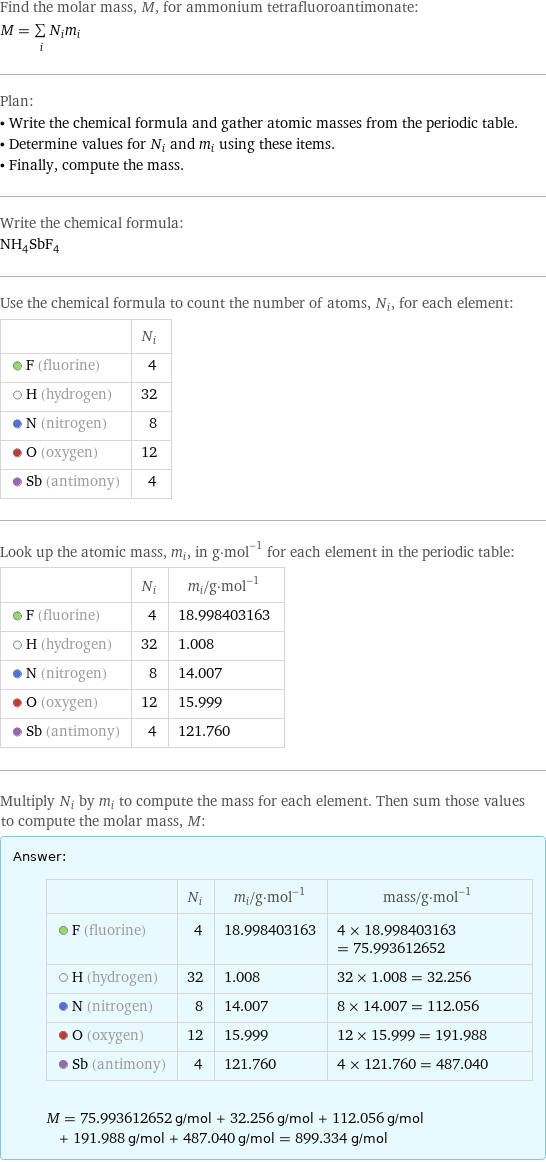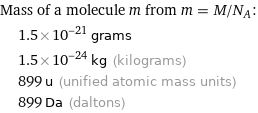Input interpretation

ammonium tetrafluoroantimonate | molar mass
Result

Find the molar mass, M, for ammonium tetrafluoroantimonate: M = sum _iN_im_i Plan: • Write the chemical formula and gather atomic masses from the periodic table. • Determine values for N_i and m_i using these items. • Finally, compute the mass. Write the chemical formula: NH_4SbF_4 Use the chemical formula to count the number of atoms, N_i, for each element: | N_i F (fluorine) | 4 H (hydrogen) | 32 N (nitrogen) | 8 O (oxygen) | 12 Sb (antimony) | 4 Look up the atomic mass, m_i, in g·mol^(-1) for each element in the periodic table: | N_i | m_i/g·mol^(-1) F (fluorine) | 4 | 18.998403163 H (hydrogen) | 32 | 1.008 N (nitrogen) | 8 | 14.007 O (oxygen) | 12 | 15.999 Sb (antimony) | 4 | 121.760 Multiply N_i by m_i to compute the mass for each element. Then sum those values to compute the molar mass, M: Answer: | | | N_i | m_i/g·mol^(-1) | mass/g·mol^(-1) F (fluorine) | 4 | 18.998403163 | 4 × 18.998403163 = 75.993612652 H (hydrogen) | 32 | 1.008 | 32 × 1.008 = 32.256 N (nitrogen) | 8 | 14.007 | 8 × 14.007 = 112.056 O (oxygen) | 12 | 15.999 | 12 × 15.999 = 191.988 Sb (antimony) | 4 | 121.760 | 4 × 121.760 = 487.040 M = 75.993612652 g/mol + 32.256 g/mol + 112.056 g/mol + 191.988 g/mol + 487.040 g/mol = 899.334 g/mol
Unit conversion

0.89933 kg/mol (kilograms per mole)
Comparisons

≈ 1.2 × molar mass of fullerene ( ≈ 721 g/mol )

≈ 4.6 × molar mass of caffeine ( ≈ 194 g/mol )

≈ 15 × molar mass of sodium chloride ( ≈ 58 g/mol )
Corresponding quantities

Mass of a molecule m from m = M/N_A: | 1.5×10^-21 grams | 1.5×10^-24 kg (kilograms) | 899 u (unified atomic mass units) | 899 Da (daltons)

Relative molecular mass M_r from M_r = M_u/M: | 899